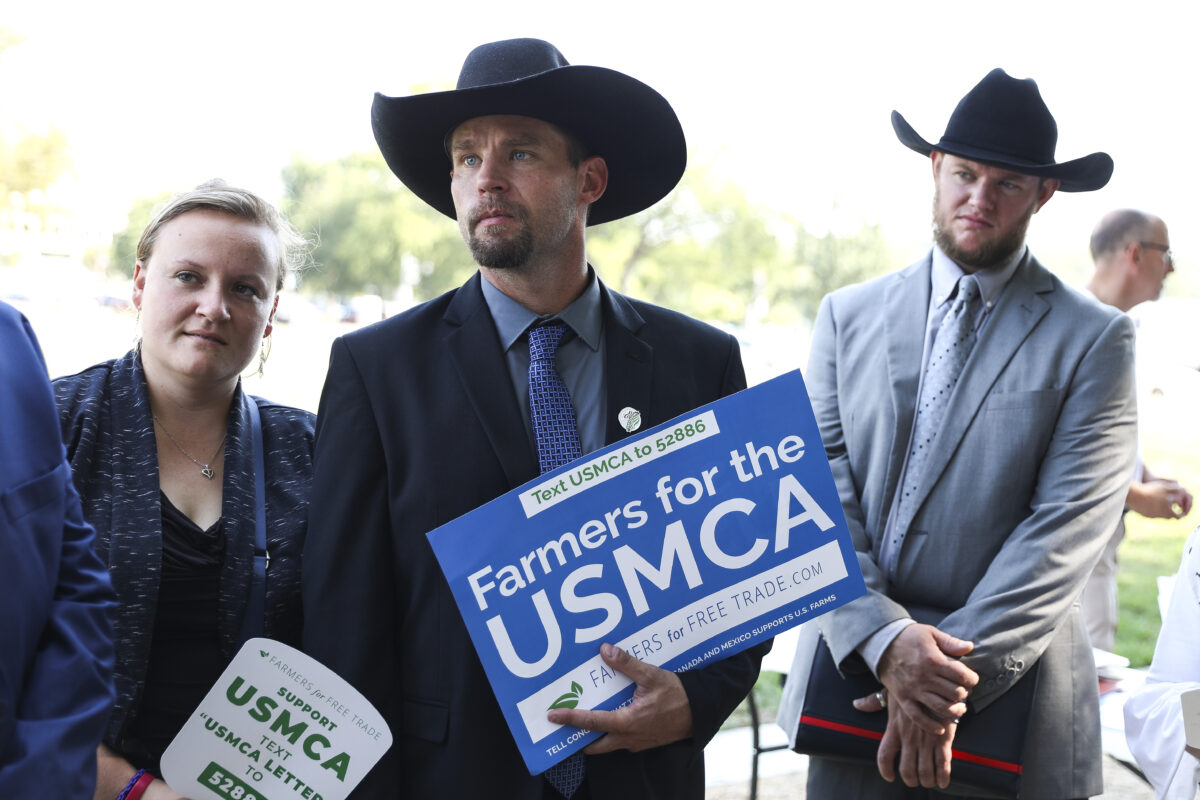
USMCA Expected to Bring Some Relief From Pandemic Economic Woes
WASHINGTON—The new trade agreement between the United States, Mexico, and Canada took effect on July..
WASHINGTON—The new trade agreement between the United States, Mexico, and Canada took effect on July 1, opening a fresh era in North American free trade.
The agreement contains new “rules of origin” on cars, which incentivize the use of high-wage labor in auto manufacturing and make U.S. and Canadian workers more competitive vis-a-vis Mexican workers. It also expands market access for U.S. farmers and ranchers.
The U.S.–Mexico–Canada Agreement (USMCA), comes at a crucial time since it encourages businesses to bring their production closer to home.
COVID-19 has caused severe supply disruptions across the globe, forcing companies to diversify their supply chains. And the hard lessons learned from the pandemic are expected to increase trade and investment activity within North America in the future and reduce the regions reliance on China or other Asian countries, according to experts.
USMCA replaces the North American Free Trade Agreement (NAFTA), which entered into force under President Bill Clinton in 1994. The new agreement comprises 34 chapters of provisions governing the trade relationship between the three countries.
The agreement maintains most chapters of NAFTA but makes significant changes in the areas of market access for autos and agriculture as well as investment, government procurement, intellectual property rights, labor, and the environment. It also addresses new issues such as digital trade, state-owned enterprises, and currency devaluation.
Known as CUSMA in Canada, and T-MEC in Mexico, USMCA has strong labor provisions, which makes the deal an important milestone for international trade, according to trade experts.
The use of high-wage labor is expected to boost production in the United States and Canada, which suffered from Mexicos cheap labor for decades.
While NAFTA successfully integrated the three economies and boosted trade in the region, it resulted in net job losses and lower wages for many American workers, according to experts.
The Economic Policy Institute estimated that the United States lost 682,900 jobs to NAFTA from 1994 through 2010.
A Win for US Workers
USMCA is estimated to have a significant effect on the U.S. manufacturing sector, particularly automotive.
Under the new agreement, 75 percent of auto content must come from North America, up from the original threshold of 62.5 percent. In addition, producers must certify that 70 percent of the steel and aluminum purchases come from the region. The higher thresholds are expected to boost production and employment in North America.
The agreement also requires 40 percent of each car and 45 percent of each truck to be made by employees earning at least $16 an hour in order to qualify for duty-free treatment.
A study released in April 2019 by the U.S. International Trade Commission showed that the trade pact would raise the United States real gross domestic product by $68.2 billion, or 0.35 percent, and create 176,000 new jobs.
Another study by the Office of the U.S. Trade Representative found that the agreement would boost automotive manufacturing investments in the United States by $34 billion over the next five years, adding nearly 76,000 new automotive jobs.
Labor provisions of the agreement hold Mexico accountable for improving workers rights, and the agreement grants the United States new enforcement authorities.
“This is the first time that Mexico negotiates a chapter that has very strong commitments,” Luz Maria De La Mora, undersecretary for foreign trade of Mexico, said at a virtual panel hosted by the Wilson Center on June 30.
Mexico passed a labor reform measure that guarantees collective bargaining and freedom of association for labor, she said, adding that the Mexican private sector is completely on board with the reform.
Impact on Farmers
The agreement also gives relief to U.S. farmers and ranchers who are struggling to recover from the losses caused by the pandemic and depressed commodity prices.
“The launch of the USMCA brings optimism to the countrys farmers and ranchers at a time they need it the most,” Zippy Duvall, president of American Farm Bureau Federation, said in a statement.
The pact is expected to boost U.S. agricultural exports by $2 billion annually, according to the Farm Bureau.
Under the new agreement, Canada will increase quotas on U.S. dairy products and will treat wheat imports the same as domestic wheat for grading purposes, which are cited as two big wins for U.S. farmers.
The deal establishes modern digital trade rules that have significant implications for the U.S. technology sector. It addresses many of the digital trade barriers that internet service companies and businesses have encountered.
A Monumental Change
After his election, Trump followed through on his promises and began ending what he called “broken trade deals.”
A few months into his presidency, he announced plans to renegotiate the terms of NAFTA, which he called “the worst trade deal in the history of the country.”
Following a lengthy and intense negotiation process, the three countries signed the agreement on Nov. 30, 2018, on the sidelines of the G-20 summit in Argentina.
Modifications were Read More – Source

